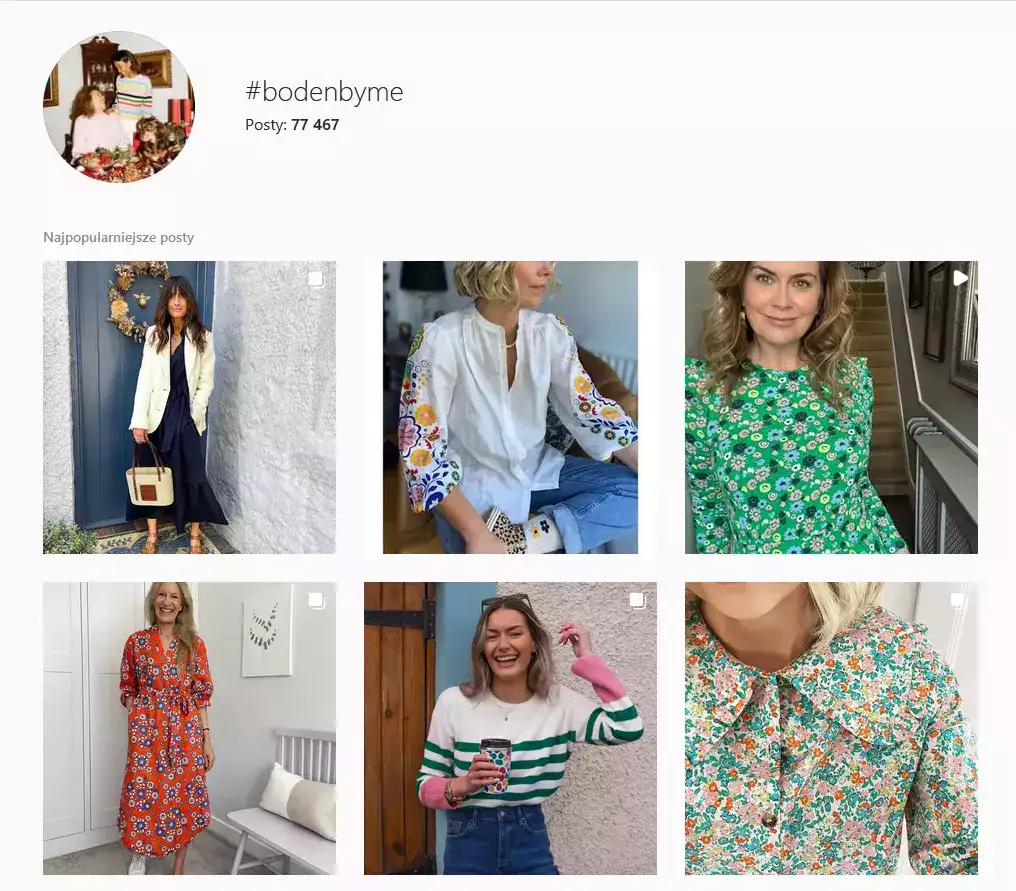8 Ways to Increase Your Website’s Conversion Rate with User-Generated Content

Author: David Morneau

If you’ve been slogging away at your website for months, or even years, without seeing the conversion rate you’d like, it might be time to start thinking outside the box. Traditional marketing techniques might not be getting you the results you want – so why not try something new?
This blog post will look at how user-generated content can help increase your website’s conversion rate. But first, we’ll analyze what UGC is, why it works, and how other companies leveraged this tool.
Keep reading to find out more!
What is User-Generated Content?
User-generated content (UGC) is just what its name implies: content created by consumers about your brand. This term includes:
- Photos
- Videos
- Written text
- Testimonials and reviews
- Social media posts
- And more
Here’s an interesting distinction, though:
Some sources consider influencer-generated content the same as UGC. And in some cases, it is. For example, if:
- A content creator randomly discovers a product/service and talks about it on their channels, or:
- An influencer receives certain items from a brand but composes their content without any guidelines from the company.
And UGC does work. The numbers paint a clear picture:
User-Generated Content Statistics
Let’s get straight into the figures:
- 88% of people trust reviews they find online as much as personal recommendations.
- 92% of people trust word of mouth - these reviews from random people online more than branded content.
- 63% of your potential customers are more likely to purchase if your website features reviews.
- Website visitors who engage with user-generated content on your website and the Q&A section are 105% more likely to buy during that session.
- User-generated photos are five times more successful than professional shots at generating conversions.
- The mix of branded content and UGC may increase engagement by 28%.
User-Generated Content Benefits and Examples
1. Social Proof
User-generated content brings social proof, basically saying to potential customers that it’s okay to buy that product. This strategy:
- Alleviates purchase uncertainty.
- Creates a need.
- Elicits a solution.
- Builds desire.
Social proof works because humans traditionally exist in groups. Therefore, we depend on our peers’ inputs and feedback.
But there’s another reason why social proof works:
This strategy is based on repetition. Repetition is a fascinating rhetorical technique because it can annihilate reason. It’s just like listening to an annoying song on the radio so much that you start singing it in your head. Eventually, you end up liking that song.
If repetition is so powerful for things you hate, imagine its effect on the things you like.
Here are two companies using social proof:
One is Boden, using its #bodenbyme hashtag on Instagram. All the company had to do was create this hashtag and then keep an eye on what people were posting.

2. Credibility
User-generated content makes the brand perceived by potential customers as much more credible. That’s why:
- Each additional star on your reviews may increase your revenues by 9%.
That’s why you should ask your customers for reviews:
- Include a personalized note in the package, asking them to take the time and write a review if they’re happy with their purchase.
- Install a cold e-mail system and send personalized messages to previous customers a few days after purchase. You can incorporate a link that sends them to a survey or review website where they can post their opinions.
- Create a social media group (e.g., Facebook group) and add existing customers there. That’s the first step towards building a community that uses your products and recommends them to others. Besides, using this strategy allows you access to a vast pool of consumer insights that would help you rethink your products or communication strategies.
- If you’re new on the market and haven’t had time to build a reputation, you can ask for an expert endorsement. For example, if you’re trying to market an innovative hair product, you can get thought leaders (stylists, make-up artists, fashion editors, etc.) in your industry to evaluate it. This strategy will help you stand apart from the competition and position yourself as an expert-recommended company.
3. More High-Quality Leads
Would you like to improve both the quantity and quality of your traffic? User-Generated Content can do both. It will get you more traffic – and it’s the relevant kind, meaning people who are very interested in your offer.
Consider this example.
A parent looking for children’s educational tools is highly likely to evaluate resources recommended by other parents. Here’s one example where a mom influencer recommends specific learning websites she uses with her kids – without any paid partnership.
How can you do the same thing?
Encourage relevant people to talk about your brand. You can use prizes, contests, or discounts. Use a hashtag to keep track of the UGC created online, and remember to give clear indications of what you’re looking for. Studies show that 53% of consumers want to receive these guidelines, whereas companies don’t want to be too pushy.
Look for branded content about your company online. Maybe people are already posting about it. Then, gather all that content and make it more visible on your:
- Website
- Social media
- Marketing e-mails
4. More Sales
Ultimately, the three benefits above lead to this prominent one: more conversions. The array of relevant information, social proof, and your encouragement will increase your sales.
And that brings us to the following point.
How to Leverage User-Generated Content to Increase Your Conversions
User-generated content may seem very abstract and complex to grasp if you’re new at this. You may not know where and how to start.
The good news is using UGC effectively for your business boils down to excellent planning.
So, user-generated content is less about creativity and more about ticking all the boxes. Let’s see how you can do that:
1. Maximize Reviews
Reviews are fantastic ways of boosting your credibility and dispelling your potential customers’ uncertainty. We have already given you some suggestions on obtaining these reviews, but that’s not enough.
You have to display them correctly on your website to boost conversions. Here’s why:
- 92% of people visiting your website don’t have a purchase intent. That’s a major problem. You don’t want those 92% to remain non-consumers. You can increase those conversion rate with UGC instead of branded content, as long as that UGC is displayed correctly.
What are, then, the best reviews from your customers’ perspectives?
They’re not the most recent, although that’s what many companies highlight on their website. And they’re also not the most positive, although the tendency is to bury negative comments deep in your website.
The best reviews are the most helpful ones, and that’s how you should display them on your website. Build two categories:
- Most helpful positive reviews
- Most helpful negative reviews
2. Repost UGC
Phone Loops reposts UGC on their Instagram frequently to increase social proof. They mention the content creators by name and add specific emojis to showcase their appreciation.
Another lesson to follow here is creating a hashtag.
We’ve discussed that before, but it’s essential to remember it. This hashtag:
- Helps you monitor your campaign’s results.
- Allows you to mention your customers by name and create a customized connection.
- Gives direction to people, so they’re more likely to post UGC about your company.
More importantly, reposted UGC gives potential buyers more insights into what a specific product looks like. These phone loops that prevent your smartphone from wobbling or falling when taking pictures may seem bulk, uncomfortable, or un-hip when you first learn the concept.
However, looking at how easy it is for others to use them, you start seeing them as a desirable solution yourself.
That’s not the only example.
Here’s an image reposed by Arctic Fox Hair Color on their Instagram
The image shows potential customers exactly how this shade of red looks on a real person taking run-of-the-mill photos.
That’s much better than seeing a highly edited commercial showcasing a model with perfect hair.
Remember that people wonder what your products will look and feel like on them before making that purchase. UGC provides helpful answers to these questions.Pro tip: Reposting isn’t limited to social media. You can share Instagram images on your website by creating a special section for these.
Just like the review section of your website, the social media highlights will create more desire and FOMO.
3. Use UGC in Ads
UGC increases your click-through rate and decreases your advertising budget.
Blender’s Eyewear is an excellent example. Although the company started small with a Shopify store, it quickly understood the importance of user-generated content.
That’s when they started blending UGC in their social media ads. Studies show that his strategy got them:
- 38% lower CPA (cost per acquisition)
- 40% lower CPC (cost per click)
- 62% more ROAS (return on ad spend)
- 100% higher CTR (click-through-rate)
Why do these ads work?
They blend:
- 5-star reviews from actual people
- Professional photos
- Unique insights from purchasing customers
4. Use Holiday UGC
Ask your customers to create specific holiday UGC to boost your sales. Holidays are perfect times for contests, discounts, and giveaways. Besides, more people plan to buy presents for their loved ones and themselves.
Once you’ve set your campaign goals according to your customers’ needs, you’ll know what UGC strategy will fit best.
Here’s one example:
Use holiday gift guides to attract more customers. Besides, they’re easy to write and you can use plenty of UGC.
That’s what Destination BC didTheir guides personalized the entire province, bringing it closer to tourists and locals alike. Besides, each guide was curated by area/community.
Even better, these guides use UGC from local vendors. This strategy increased those vendor’s traffic because travelers want to shop like locals, not like tourists.
5. Use Influencers
Influencer-generated content can increase your conversions, reputation, awareness, and engagement. You can obtain these results through paid partnerships but also by product seeding.
This strategy implies getting in touch with specific influencers in your niche and sending them products for review. This relationship isn’t based on a contract, so you won’t have any control over the content you receive.
To avoid sending people your products and not getting quality content back:
- Choose the right influencers. Check out their social media and analyze how they interact with their followers. Do they reply promptly? Are they helpful? If so, chances are they’ll be professional with you too.
- Keep in touch. DM or e-mail them before sending the products. Keep things light, praise them for their content, but also try to outline your expectations.
- Ask for feedback. Call them a few days after sending the products and ask what they’ve thought of them. Inquire about their likes and dislikes, but don’t be pushy. Most content creators will post about your products if you chose them correctly and if you nurture this connection.
Pro tip: Feature this content in a special section on your website. Place it high up on your front page or on specific product pages, depending on your goals. If you have an intuitive website creator, you can experiment and beta-test various alternatives to see which generates more conversions.
6. Write UGC-Based Marketing E-mails
Research shows that the cart abandonment rate is 69% worldwide. To reduce this, you can connect with these undecided shoppers via e-mail.
Videos, photos, and reviews from customers just like them may convince these people to change their minds. Of course, make sure these testimonies are about the products they’ve abandoned!
Alternatively, you can include UGC in all marketing e-mails to increase click-through rate and purchases:
- Use e-mails to ask for UGC, like oVertone
- Display your customers like Black Mill Clothing
- Display your customers’ opinions like Everlane
- Use UGC in e-mails to promote contests
7. Use Google Rich Snippets
Let’s say you have an e-commerce website that retails gym equipment. When people look for fitness shorts online, they will stumble over your page on Google’s results page.
You know what that looks like.
Pro tips:
- Choose a review that highlights a unique advantage to differentiate you from your competition.
- Make sure the review offers insight for added credibility.
8. Make UGC Shoppable
Your goal is to increase your sales, which means your customers must have an easy time finding and buying your products. You don’t want to send them on a quest around the Internet to find what you’re selling.
So, make sure the links to your product pages are at their fingertips.
How Can You Manage User-Generated Content?
Next, you should establish specific hashtags for each new UGC campaign you’re launching and clear guidelines. People should know which content they’re expected to produce, their deadlines, and preferred channels.
Even more importantly, you must learn more about UGC dos and don’ts.
Ask for permission and disclose your intention of reusing UGC. Always credit the original creators and give shout-outs to special customers.



